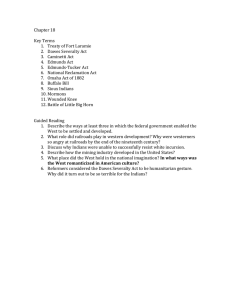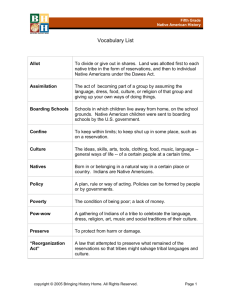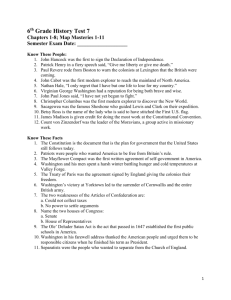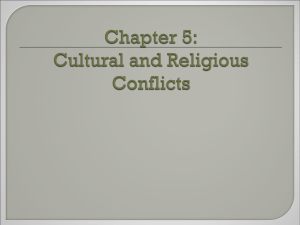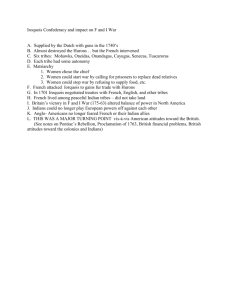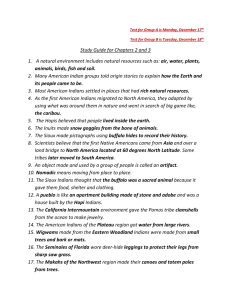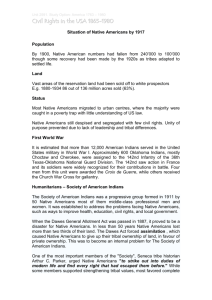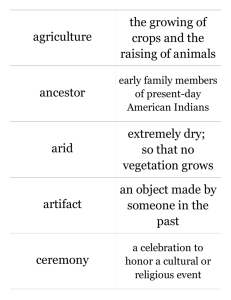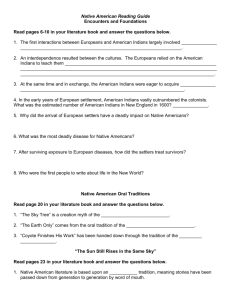The Plains Indians
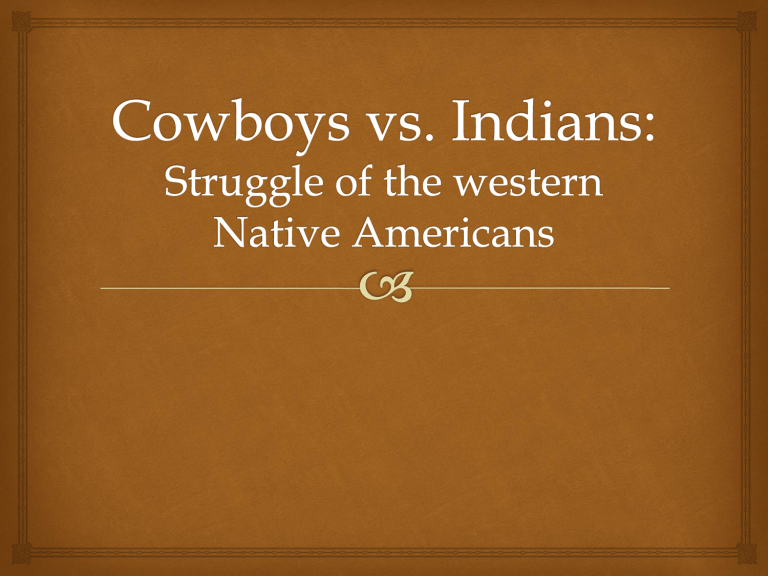
Discoveries of precious metals in the West causes the explosion of boomtowns
No established gov’t, vigilance committees enforce the “law”
Boomtowns cause territorial populations to grow, qualify for statehood
Mining tech improves as mines exhausted,
hydraulic mining allows for exaction of minerals
Mining has devastating effects on environment
Texas Longhorn: breed of cattle adapted to life in Amer. West with little water, eat prairie grass
Open range: vast gov’t owned land for grazing
Ranchers take their cattle on long drives to R.R.
Over time the open range is bought up by farmers and fenced with barbed wire
Mexican land owners in Southwest owned large tracts of land called haciendas
Americans move west and quickly outnumber
Hispanics who lived there since Spanish times
Resulting culture clash, Hispanics marginalized
As railroads reach SW, pop. Grows
El Paso, Albuquerque, Los Angeles develop barrios
Native American Tribes
The Plains Indians
Many tribes of the Great Plains were nomads
Followed buffalo herds for food, shelter, tools
Americans forced natives to relocate, or move off lands that were promised to them through treaties
Sometimes in exchange for money, or annuities
Many natives forced to live in poverty
Many tribes, esp. Dakota tribe, fight back
Western War
A Sioux tribe called the Lakota go to war against U.S. troops under the leadership of chiefs Red Cloud,
Sitting Bull, and Crazy Horse
Trick troops into ambush under Capt. Will Fetterman
The army abandons Bozeman Trail post in 1868
Chief Black Kettle of the Sand Creek tribe, after much war, rides to army post in CO
U.S. troops massacre Sand Creeks riding under
American and White Truce Flag
Attempts At Peace
1867: Congress forms Indian Peace Commission
Plan: create two reservations, if Indians refuse the army will attack
Chiefs forced to sign treaties, Americans ignored the terms, settlers occupied “Indian Land”
Americans kill buffalo to get rid of Indians
Big Battles
Battle of Little Big Horn: US Lt. Col. Custer lead troops against Lakota & Cheyenne against orders, slaughtered
Newspapers paint battle as a massacre on the part of the Indians, the army is dispatched to deal with them
Battle of Nez Perce: Indians refuse to leave southern land for a smaller reservation in Idaho, army attacks, tribe relocated to Oklahoma
Wounded Knee: Chief Sitting Bull defies U.S. orders, continues Ghost Dance, and is attacked—200 Lakota dead
The Dawes Act
1881: A Century of Dishonor published
Changes American thinking about Indians
New goal is to assimilate Indians
1887: Congress passes the Dawes Act—Fails
Divides reservations into individual farm lands
1924: Citizenship Act
1934: Indian Reorganization Act
Reversed Dawes Act, restored reservation lands, allow
Indians to elect their own governments
